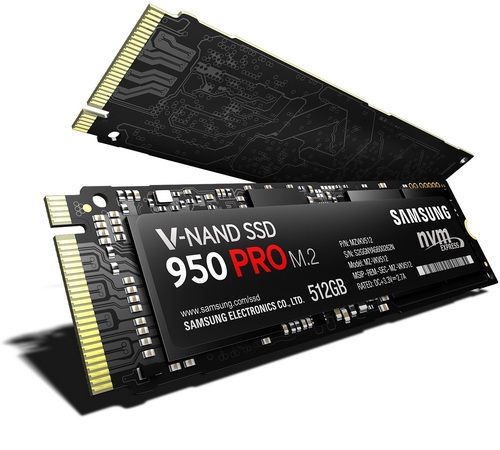INTRODUCTION
SATA 3 based solid state drive models are still among the hottest hardware components currently in the market but their performance is clearly being overshadowed by what the newer M.2 and PCIe models are capable of. Obviously the current performance limitations serial ATA (v3/3.1) has (600MB/s) have somewhat "forced" manufacturers to focus their resources towards the development and release of newer v3.2 models which can reach data transfer speeds of up to 1969MB/s something which i can't say that it came as a surprise to all of us (even the 12Gbps SAS interface gets maxed out at 1500MB/s not to mention it costs quite a bit). What did come as a surprise however was the development of SSD drives featuring the latest NVMe communications interface/protocol (Non-Volatile Memory) by a small consortium of companies (Intel, Samsung, SanDisk, Dell, and Seagate) which can reach speeds of up to 2500MB/s. Intel was the first to launch a NVMe consumer drive (750 model) last year but Samsung followed soon afterwards (Samsung on the other hand launched the first enterprise grade model followed soon afterwards by Intel) with the 950 Pro line and today we'll be testing the 512GB model.
Samsung Electronics Co., Ltd. is a global leader in technology, opening new possibilities for people everywhere. Through relentless innovation and discovery, we are transforming the worlds of televisions, smartphones, personal computers, printers, cameras, home appliances, LTE systems, medical devices, semiconductors and LED solutions. We employ 236,000 people across 79 countries with annual sales of US$187.8 billion. Samsung's Memory Business offers the industry's most advanced and extensive range of memory semiconductor products. As a leader in both the design and manufacture of memory semiconductor since 1993, the business provides key memory products including dynamic random access memory (DRAM), static random access memory (SRAM), NAND flash memory, Solid State Drives (SSD) and a range of green memory solutions for use in PC, server and mobile applications. Samsung is also leading the industry in advancements of next generation DRAM and NAND flash technologies while nurturing future memory technologies.
As mentioned earlier the 950 Pro line of SSDs by Samsung is based on the new NVMe communications interface/protocol and follows the typical M.2 2280 form factor (80mm long) which we see a lot with PCIe models. It also features Samsung's tri-core 8-channel ARM-based UBX controller (also used in the SM951 model), 3D V-NAND 32-layer 128Gbit MLC NAND flash (also used in the 850 Pro models), 512MB LPDDR3 DRAM and fully supports AES-256 hardware encryption, TCG Opal 2.0 (eDrive), TRIM, Garbage collection and DevSleep (power save mode). Samsung covers the 950 Pro line with a 5 year warranty and also states that the 512GB model has an MTBF of 1.5 million hours with an TBW (Total Bytes Written) of 400TB. Now as many of you know our primary test rig on which we've been testing SATA III and PCIe SSDs for almost 4 years now is based on the Intel X79 chipset and so it doesn't come with a M.2 connector. So because of that we decided to test the 950 Pro 512GB with a PCIe x4 card on our test rig and on its own by plugging it in a Z170 test rig. That way not only can we record performance differences between PCIe x4 and M.2 but all of you who may not own a M.2 compatible motherboard will see if it's worth pairing the 950 Pro with a PCIe adapter instead of upgrading your systems (took some time to complete tests on both systems but we think it was well worth it).

 O-Sense
O-Sense








.png)

